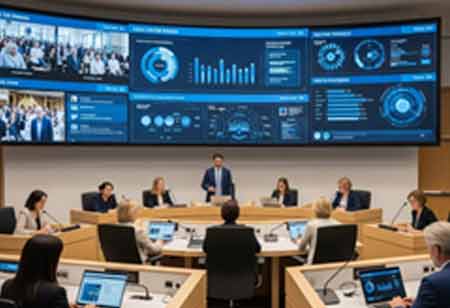Thank you for Subscribing to Gov Business Review Weekly Brief
Bridging the Gap: Modernizing Public Affairs Through Technology
Implementing technology in public affairs involves overcoming resistance to change and ensuring equitable access. Engaging stakeholders can enhance governance and promote transparency in public services.

By
Gov Business Review | Wednesday, September 03, 2025
Stay ahead of the industry with exclusive feature stories on the top companies, expert insights and the latest news delivered straight to your inbox. Subscribe today.
Fremont, CA: Public affairs are evolving to meet society's needs, and the integration of cutting-edge technology plays a crucial role in this process. Innovations like data analytics and AI can improve efficiency, accountability, and transparency. However, successfully implementing these technologies presents various challenges that require careful navigation.
Balancing Innovation and Regulation
Balancing innovation and regulation is one of the foremost challenges in integrating advanced technology into public affairs. Public organizations must adhere to strict guidelines that govern privacy, data security, and ethical considerations. As technology evolves rapidly, these regulations can become outdated, creating a bottleneck for innovation. For instance, introducing smart city initiatives often requires collecting vast amounts of data from citizens.
While this data can be instrumental in improving urban infrastructure and services, it raises concerns about privacy and potential misuse. Public affairs leaders must work diligently to establish frameworks that foster innovation while safeguarding citizens’ rights. This often entails collaborating with legal experts, technology providers, and community stakeholders to craft comprehensive policies that ensure responsible technology usage.
Resistance to Change
Another significant barrier to implementing cutting-edge technology in public affairs is resistance to change among stakeholders. Employees, politicians, and the public can resist new technologies due to fear of the unknown or a lack of understanding of the benefits. This resistance can be particularly pronounced in public organizations that have traditionally relied on established methods of operation.
To combat this resistance, effective change management strategies are essential. Leaders must prioritize communication, demonstrating how technology can streamline processes and improve service delivery. Training programs can help stakeholders become comfortable with new tools, emphasizing the technology's practical applications and benefits. Additionally, involving employees in decision-making can foster a sense of ownership and encourage a more collaborative approach to technology adoption.
Ensuring Inclusivity and Access
A critical consideration in implementing cutting-edge technology in public affairs is ensuring inclusivity and equitable access for all citizens. As technology can sometimes deepen existing inequalities, it is paramount that public officials address the digital divide. In many communities, especially underserved areas, access to technology and the internet is limited. To ensure that technological advancements benefit everyone, public agencies should work to provide resources and support for marginalized populations.
This may include investing in infrastructure that enhances internet connectivity, offering training programs for digital literacy, and creating platforms for citizen engagement accessible to all demographic groups. Public affairs can better serve the entire community by actively seeking to include diverse perspectives in technology implementation initiatives, thereby enhancing overall effectiveness and accountability.
More in News






